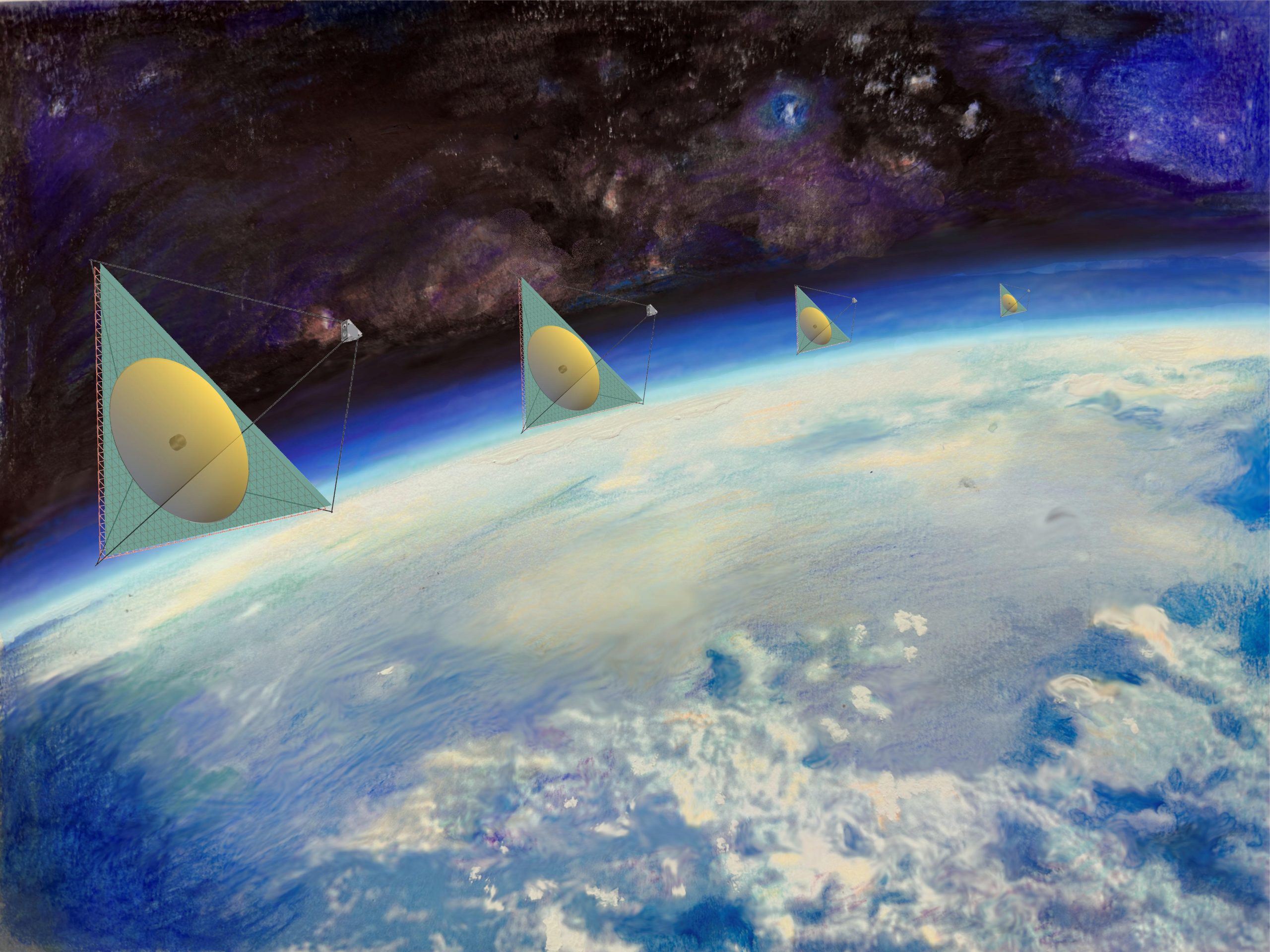Los investigadores han desarrollado un nuevo método para fabricar espejos telescópicos que podrían hacer posible poner en órbita telescopios mucho más grandes y, por lo tanto, más sensibles. Crédito: Sebastian Rabin, Instituto Max Planck de Física Extraterrestre
Los espejos ligeros y flexibles se pueden plegar de forma compacta en el momento del lanzamiento y luego remodelarse con precisión una vez desplegados.
Los científicos han desarrollado un nuevo método para producir y dar forma a grandes espejos de alta calidad, que son mucho más delgados que los espejos primarios que se utilizan tradicionalmente en los telescopios espaciales. Estos espejos resultantes tienen suficiente flexibilidad para envolverse y empaquetarse de manera eficiente dentro de una nave espacial durante el lanzamiento.
«Lanzar y desplegar telescopios espaciales es un procedimiento complejo y costoso», dijo Sebastien Rabian del Instituto Max Planck de Física Extraterrestre en Alemania. «Este nuevo enfoque, que es muy diferente de los procedimientos típicos de producción y pulido de espejos, podría ayudar a resolver los problemas de peso y empaque de los espejos de los telescopios, lo que permitiría poner en órbita telescopios más grandes y, por lo tanto, más sensibles».

Los investigadores crearon los espejos utilizando la deposición de vapor químico para hacer crecer espejos de película en un fluido giratorio dentro de una cámara de vacío. Esto les permitió crear una película parabólica delgada que podría usarse como el espejo principal de un telescopio simplemente recubriéndolo con una superficie reflectante como el aluminio. Crédito: Sebastian Rabin, Instituto Max Planck de Física Extraterrestre
En Revista Optica Publishing Group óptica aplicadaRabih informó sobre la fabricación exitosa de prototipos de espejos de película parabólica de hasta 30 cm de diámetro. Estos espejos, que se pueden aumentar a los tamaños requeridos en los telescopios espaciales, se crearon mediante la deposición de vapor químico para hacer crecer espejos de membrana en un fluido giratorio dentro de una cámara de vacío. También desarrolló un método que usa calor para corregir de manera adaptativa los defectos que pueden ocurrir después de la exposición del espejo.
«Aunque este trabajo solo demostró la viabilidad de los métodos, sienta las bases para grandes sistemas de espejos empacables que son menos costosos», dijo Rabian. «Podría hacer realidad los espejos livianos de 15 o 20 metros de diámetro, lo que permitiría telescopios espaciales que son órdenes de magnitud más sensibles que los actualmente desplegados o planificados».
Aplicar un proceso antiguo de una manera nueva
El nuevo método fue desarrollado durante[{» attribute=»»>COVID-19 pandemic, which Rabien says gave him some extra time to think and try out new concepts. “In a long series of tests, we researched many liquids to find out their usability for the process, investigated how the polymer growth can be carried out homogeneously, and worked to optimize the process,” he said.
For chemical vapor deposition, a precursor material is evaporated and thermally split into monomeric molecules. Those molecules deposit on the surfaces in a vacuum chamber and then combine to form a polymer. This process is commonly used to apply coatings such as the ones that make electronics water-resistant, but this is the first time it has been used to create parabolic membrane mirrors with the optical qualities necessary for use in telescopes.

Membrane mirrors made using the new technique are flexible enough to be rolled up. This could be helpful for storing the mirrors inside of a launch vehicle. Credit: Sebastian Rabien, Max Planck Institute for Extraterrestrial Physics
To create the precise shape necessary for a telescope mirror, the researchers added a rotating container filled with a small amount of liquid to the inside of the vacuum chamber. The liquid forms a perfect parabolic shape onto which the polymer can grow, forming the mirror base. When the polymer is thick enough, a reflective metal layer is applied to the top via evaporation and the liquid is washed away.
“It has long been known that rotating liquids that are aligned with the local gravitational axis will naturally form a paraboloid surface shape,” said Rabien. “Utilizing this basic physics phenomenon, we deposited a polymer onto this perfect optical surface, which formed a parabolic thin membrane that can be used as the primary mirror of a telescope once coated with a reflecting surface such as aluminum.”
Although other groups have created thin membranes for similar purposes, these mirrors are typically shaped using a high-quality optical mold. Using a liquid to form the shape is much more affordable and can be more easily scaled up to large sizes.
Reshaping a folded mirror
The thin and lightweight mirror created using this technique can easily be folded or rolled up during the trip to space. However, it would be nearly impossible to get it back to the perfect parabolic shape after unpacking. To reshape the membrane mirror, the researchers developed a thermal method that uses a localized temperature change created with light to enable adaptive shape control that can bring the thin membrane into the desired optical shape.
The researchers tested their approach by creating 30-cm diameter membrane mirrors in a vacuum deposition chamber. After much trial and error, they were able to produce high-quality mirrors with a surface shape suitable for telescopes. They also showed that their thermal radiative adaptive shaping method worked well, as demonstrated with an array of radiators and illumination from a digital light projector.
The new membrane-based mirrors could also be used in adaptive optics systems. Adaptive optics can improve the performance of optical systems by using a deformable mirror to compensate for distortion in incoming light. Because the surface of the new membrane mirrors is deformable, these mirrors could be shaped with electrostatic actuators to create deformable mirrors that are less expensive to make than those created with conventional methods.
Next, the researchers plan to apply more sophisticated adaptive control to study how well the final surface can be shaped and how much of an initial distortion can be tolerated. They also plan to create a meter-sized deposition chamber to better study the surface structure and packaging and unfolding processes for a large-scale primary mirror.
Reference: “Adaptive parabolic membrane mirrors for large deployable space telescopes” by Sebastian Rabien, 4 April 2023, Applied Optics.
DOI: 10.1364/AO.487262

«Organizador aficionado. Aspirante a evangelista de la cerveza. Fanático de la web en general. Ninja certificado de Internet. Lector ávido».






More Stories
Se mide por primera vez la velocidad del entrelazamiento cuántico
La NASA está trabajando para «corregir y corregir» los problemas del Boeing Starliner después del primer vuelo de prueba con astronautas
Un astronauta de la NASA permanece en el hospital tras regresar de una larga estancia en el espacio